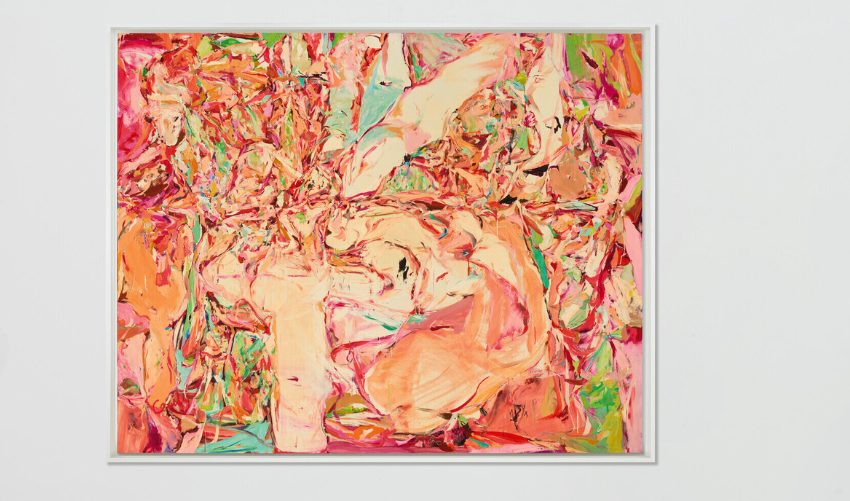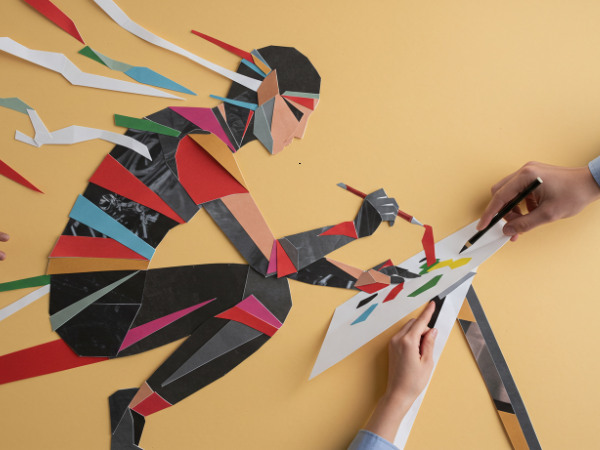Keith Haring’s art is instantly recognizable. His bold lines and bright colors create a unique style.
Understanding Keith Haring’s iconic art takes us into a world of energy and emotion. Born in the 1950s, Haring used his art to express ideas about love, social justice, and the human experience. His work often features playful figures and symbols that seem to dance across the canvas.
Haring’s art is more than just visuals; it carries powerful messages that resonate with many people. Each piece tells a story, inviting viewers to think and feel. By exploring his art, we can better appreciate its impact and the themes he championed. Dive into the vibrant world of Haring and discover the depth behind his joyful imagery.
Keith Haring’s Early Life
Understanding Keith Haring’s iconic art begins with exploring his early life. Keith Haring was born in 1958 in Reading, Pennsylvania. His childhood laid the foundation for his vibrant and unique artistic style. Haring’s experiences shaped his view of the world and his desire to create art for everyone. This section delves into the influences and education that molded Haring into the renowned artist he became.
Childhood Influences
Keith Haring grew up in a supportive family. His father was a cartoonist, which sparked Haring’s interest in art early on. From a young age, he was surrounded by creativity. His family encouraged his artistic pursuits. This support was vital for his development.
Key influences during his childhood included:
- Cartoons: Haring loved cartoons, especially those in newspapers and comic books.
- Street Culture: Growing up in the 1960s and 1970s, urban street culture inspired him.
- Music: The music scene influenced his vibrant use of color and rhythm in art.
Haring’s exposure to different forms of art shaped his style. He admired artists like Andy Warhol and Jean-Michel Basquiat. Their work inspired him to blend pop culture with social commentary. Haring began to develop a unique visual language, using simple lines and bold colors.
Art Education
Haring’s art education played a crucial role in his artistic journey. He studied at the School of Visual Arts in New York City. Here, he learned various techniques and styles. His time at the school allowed him to experiment and grow.
Some important aspects of his art education included:
- Exposure to Diverse Art Forms: Haring explored different mediums, from painting to sculpture.
- Collaboration: He worked with other artists, which broadened his perspective.
- Street Art Movement: Haring became part of the vibrant street art scene in New York.
Haring’s education was not just formal. He learned from the streets. He created chalk drawings in subway stations. These pieces caught the attention of the public. His art became a voice for social issues, including AIDS awareness and LGBTQ+ rights.
The Birth Of Haring’s Style
Keith Haring’s art emerged in the early 1980s. It reflects a vibrant and unique style. The birth of Haring’s style marked a significant moment in the art world. His work combined bold lines and bright colors. Haring used simple shapes to convey deep messages. This section explores the key elements that shaped his iconic art.
Signature Line Work
Haring’s signature line work is instantly recognizable. He used thick black lines to create figures and symbols. This technique made his art stand out. The simplicity of the lines conveys energy and movement. Lines represent the connection between people. They can also symbolize unity and togetherness.
Key features of Haring’s line work include:
- Bold, thick black outlines
- Fluid, dynamic shapes
- Expressive figures in motion
His approach was inspired by street art and graffiti. Haring often painted in public spaces. This choice made his art accessible to everyone. He believed art should be for all, not just the elite. His line work became a language of its own.
Here is a table of Haring’s line work characteristics:
| Characteristic | Description |
|---|---|
| Thickness | Bold, black lines that create strong contrast |
| Fluidity | Curved lines that suggest movement and energy |
| Symbolism | Lines often represent human connection and community |
Haring’s line work is not just about aesthetics. It carries meaning and emotion. The simplicity invites viewers to connect with the art on a personal level.
Colorful Iconography
Haring’s use of color is as striking as his line work. Bright hues dominate his canvases. Colors bring energy and vibrancy to his messages. Each color has a purpose and meaning. Haring often used primary colors like red, blue, and yellow.
Some key aspects of Haring’s colorful iconography include:
- Vivid colors that attract attention
- Symbolic use of color to convey emotions
- Recurring motifs, like hearts and babies
His imagery often featured playful characters. These characters express joy, love, and unity. Haring’s art speaks about social issues. He addressed themes like AIDS awareness and apartheid. His colorful symbols made complex ideas easier to understand.
Here is a brief list of common symbols in Haring’s art:
- Radiant Baby – symbolizes innocence and hope
- Heart – represents love and passion
- Figures dancing – symbolize community and joy
Through color and iconography, Haring created a unique visual language. His art continues to inspire and engage audiences worldwide.
Social Commentary In Art
Keith Haring’s art speaks loudly. His bold lines and bright colors capture attention. But there is more beneath the surface. Haring’s work is rich in social commentary. He used his art to address important issues. It reflects the struggles and joys of society. This makes his art not just beautiful, but meaningful.
Activism And Advocacy
Haring was an activist. He wanted to make a difference. His art often focused on social issues like AIDS, poverty, and racism. Haring believed in the power of art as a tool for change. He used public spaces for his work. This choice made his message accessible to everyone.
Some key themes in Haring’s activism include:
- AIDS Awareness: Haring created pieces that highlighted the AIDS crisis. He wanted to educate and reduce stigma.
- Anti-violence: His art often showed the pain of violence. Haring wanted to promote peace and understanding.
- Children’s Rights: Haring believed in protecting children. He created works that celebrated youth and innocence.
Haring also donated his art to charity. He supported organizations fighting for social justice. His foundation continues this work today.
Political Messages
Haring’s art is filled with political messages. He often tackled issues of inequality and oppression. His iconic images provoke thought and conversation. Haring believed art should challenge the status quo.
Key political themes in Haring’s work include:
- Racial Equality: Haring’s art speaks against racism. It calls for unity and understanding among all races.
- Gay Rights: As a gay man, Haring used his art to advocate for LGBTQ+ rights. His work celebrates love and acceptance.
- Environmental Issues: Haring addressed environmental concerns. He urged people to care for the planet.
His style draws attention. Bright colors and simple forms invite viewers in. They encourage people to think and act. Haring’s art remains relevant today, inspiring new generations to engage in social change.
Public Art And Murals
Keith Haring’s art is more than just bright colors and bold lines. It speaks to the public. Haring used walls, sidewalks, and buildings to share his message. His public art and murals connect with people everywhere. They tell stories of love, hope, and social issues. Through these pieces, Haring made art accessible to all. He brought art out of galleries and into the streets.
Street Art Movement
The street art movement grew in the 1980s. Keith Haring was a key figure in this change. He made art that was not just for rich collectors. His work was for everyone. Haring’s style was simple but powerful. He used bright colors and recognizable figures. His art often featured:
- Bold lines
- Playful characters
- Dynamic movement
Haring believed art should be everywhere. He often painted in public spaces. This made his work part of everyday life. Haring’s art addressed important issues, such as:
- AIDS awareness
- Racism
- Homophobia
His work inspired many artists. They saw art as a way to express social messages. Haring showed that art can be a tool for change. The street art movement continues today, influenced by Haring’s legacy.
Notable Murals
Keith Haring created many famous murals around the world. These large pieces often carried strong messages. One of his most famous murals is the “Crack is Wack” mural in Harlem. This mural warns against drug use. It is vibrant and full of life, just like Haring’s other works.
Another notable mural is the “Once Upon a Time” mural in Houston. This piece celebrates love and unity. Haring painted it in 1989, and it remains a beloved landmark. Here are a few more of his important murals:
| Mural Name | Location | Year |
|---|---|---|
| Crack is Wack | Harlem, New York | 1986 |
| Once Upon a Time | Houston, Texas | 1989 |
| The Story of Red and Blue | Amsterdam, Netherlands | 1986 |
These murals show Haring’s unique style. They bring joy and raise awareness. Haring’s public art continues to inspire people. It breaks down barriers and fosters connection.
Haring’s Influence On Pop Culture
Keith Haring’s art changed the way we see pop culture. His bright colors and bold lines captured attention. Haring’s work was more than just art. It was a voice for social issues. His influence stretched far beyond galleries. From fashion to music, Haring’s style can be seen everywhere. This section explores how Haring impacted pop culture.
Collaborations
Haring worked with many famous people and brands. These collaborations helped spread his message. They made his art accessible to a wider audience. Here are some notable collaborations:
- Andy Warhol: Haring collaborated with the pop art icon on several projects.
- Basquiat: Haring and Jean-Michel Basquiat shared similar styles and themes.
- Art for Social Causes: Haring created art for AIDS awareness and anti-apartheid movements.
Haring’s art also appeared in various commercial projects. These projects included:
| Brand | Product | Year |
|---|---|---|
| Chanel | Fashion line | 2016 |
| MTV | Music video set | 1980s |
| Swatch | Watch collection | 1989 |
These collaborations brought Haring’s art to new fans. They helped his work live on in different forms.
Fashion And Merchandise
Haring’s art became a popular choice in fashion. Many brands used his designs on clothing. Haring’s work was vibrant and eye-catching. It appealed to youth culture. Here are some examples:
- T-shirts: Many brands released T-shirts featuring Haring’s art.
- Accessories: Items like bags and hats often showcased his designs.
- Collaborative collections: Fashion houses created limited editions based on his work.
Merchandise featuring Haring’s art still sells today. His iconic designs are timeless. They represent a spirit of rebellion and joy. Popular items include:
- Posters
- Stickers
- Art books
Haring’s art transcends boundaries. It connects fashion, art, and social issues. His influence on pop culture remains strong.
Conclusion
Keith Haring’s art speaks to everyone. His bright colors and bold lines grab attention. Each piece tells a story about life and love. Haring’s work encourages us to think and feel. He used art to share messages of hope and unity.
Understanding his art helps us connect with these themes. Dive into his world and explore the meaning behind each piece. Discover how his vision still influences artists today. Haring’s legacy reminds us of the power of art to inspire change.
Enjoy the journey through his unique style and message.




